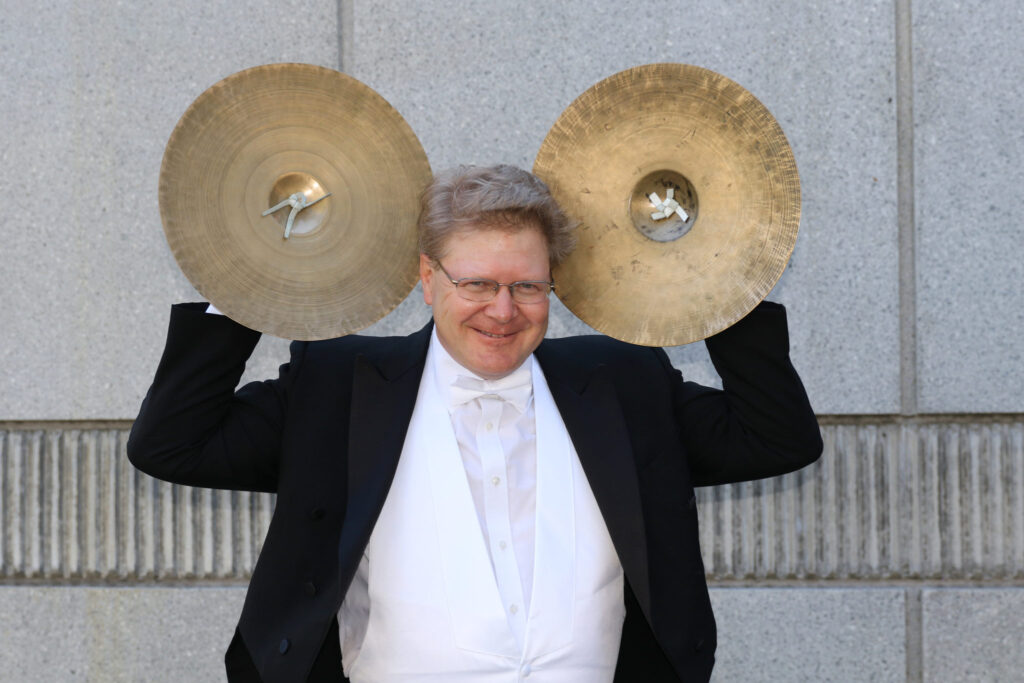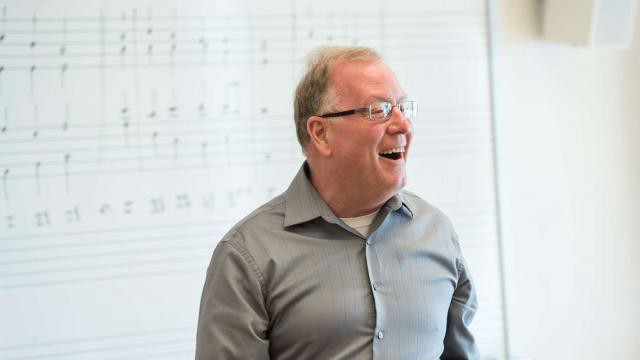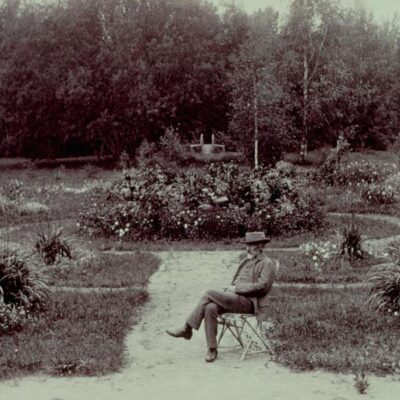
Who knew the triangle could be so expressive? Leave it to percussionist Victor Avdienko to navigate the triangle-a-thon in Rott’s Symphony No. 1 on the upcoming MAHLER’S INNER CIRCLE concerts. We can only agree that “We gotta fever… For more triangle!”
You performed one single, epic, cymbal crash in the 2019 season finale featuring Bruckner’s Symphony No.7. In Mahler’s Inner Circle, it’s the opposite challenge as you play the triangle for 600 out of the 1500 bars of music in Rott’s Symphony No. 1. A reviewer wrote: “A percussionist who sees this as the glory moment of his career could create an effect quite like that of a doorbell being stuck. The conductor is well advised to cold-heartedly rein him or her in.”
Your thoughts and approach? ?Any insights you can share as you prep for the piece..?
The triangle is a very misunderstood percussion instrument. You give a 3 year old a triangle, and they instinctively know how to play it. That seemed to be the extent of Triangle Pedagogy for a long time, and unfortunately, many today still feel the same way about the skill level needed to play this expressive instrument.
Fortunately, we now have a large variety of quality instruments made from steel, brass, bronze and even gold. The color and sound possibilities are numerous.
When I am presented with a piece of music with a lot of triangle, I decide whether it serves a coloristic purpose, or is it a sound which helps tell a story. Twinkling starlight or the Chuck Wagon dinner call? In ballet music, the triangle provides much of the rhythmic plus for the dancers.
Sometimes it needs to be a refined pure color and sometimes it needs to be an all encompassing wash of sound. Many times I will use a few triangles for a specific piece.
We often act as sound designers in the orchestra. The triangle is the highest sound in the orchestra, and as a result, the loudest. It always cuts through the ensemble, and with that much power comes great responsibility to be musically sensitive. There are techniques and occasions to play the triangle in a loud aggressive manner, and you can adjust your strokes to diffuse the sound if it needs to disappear in the texture. It takes imagination and a bit of skill to convince the audience that the triangle can be just as emotional and expressive and any other instrument in the orchestra.
An interesting bit of history. The triangle as we know it today in the orchestra, was an exotic sound which represented the Turkish Military during the Ottoman Empire. This caused some fear and terror in the European psyche. It took the genius of Beethoven’s 9th Symphony to liberate the triangle by interrupting the Ode to Joy with a Turkish Military band playing the same melody. The little triangle leading the march. They join musical forces for the glorious finale. Musical Detente!
You’re also a fly-fishing instructor – and you’ve donated your services as an auction prize in the past, so a few lucky California Symphony donors have shared the experience with you. What is the appeal of fly-fishing, and is there any connection with your career as a percussionist?
Fly Fishing and playing music have a similar effect on me. Whether I am casting to wary trout in a mountain stream, or on stage at Carnegie Hall, the focus for both is extremely intense, but the goal is to lose myself in the moment and the environment. I have also found that using musical terms and images aids in teaching Fly casting. Accelerando to a staccato note is the best musical analogy for a proper casting stroke.
In your bio, you site Micky Dolenz of the Monkees as your inspiration to learn your instrument. Is that for real? ?
My dream is to meet Micky Dolenz and tell him about his influence on me. Although he actually didn’t play the drums on the TV series (he had to learn in order to play live concerts, however), his humor and personality struck me profoundly. I thought that is was so cool to sing and play drums, all while making people laugh. I do hope I can meet him one day.
MAHLER’S INNER CIRCLE, featuring a whole lot of triangle by Victor Avdienko, takes place Saturday, March 25 at 7:30 p.m. and Sunday, March 26 at 4 p.m. at the Lesher Center for the Arts in Walnut Creek. Tickets are $49 to $79 and $20 for students 25 and under, and include a free 30-minute pre-concert talk starting one hour before the performance. Buy tickets online or call or visit the Lesher Center Ticket Office at 925.943.7469, Wed – Sun, 12:00 noon to 6:00 p.m.


